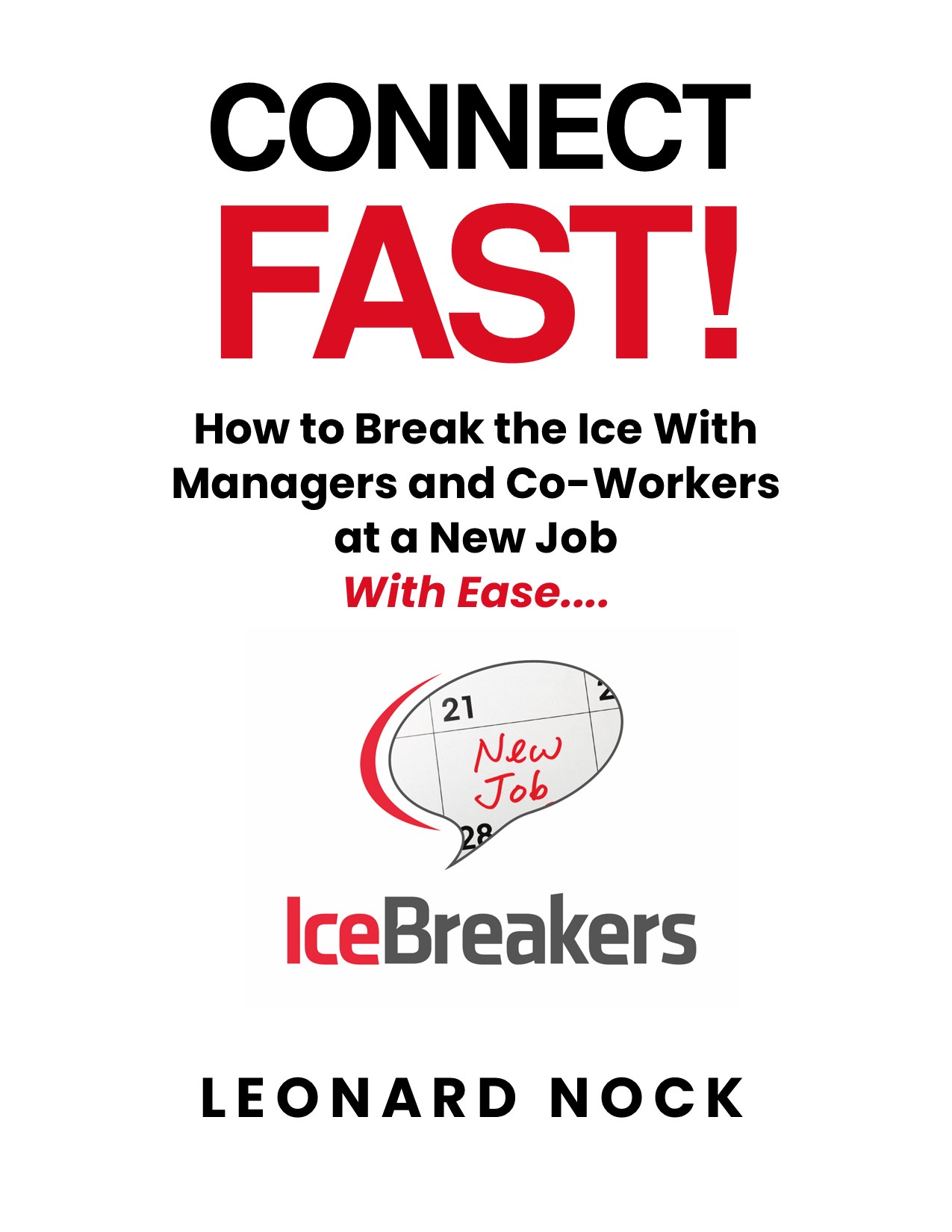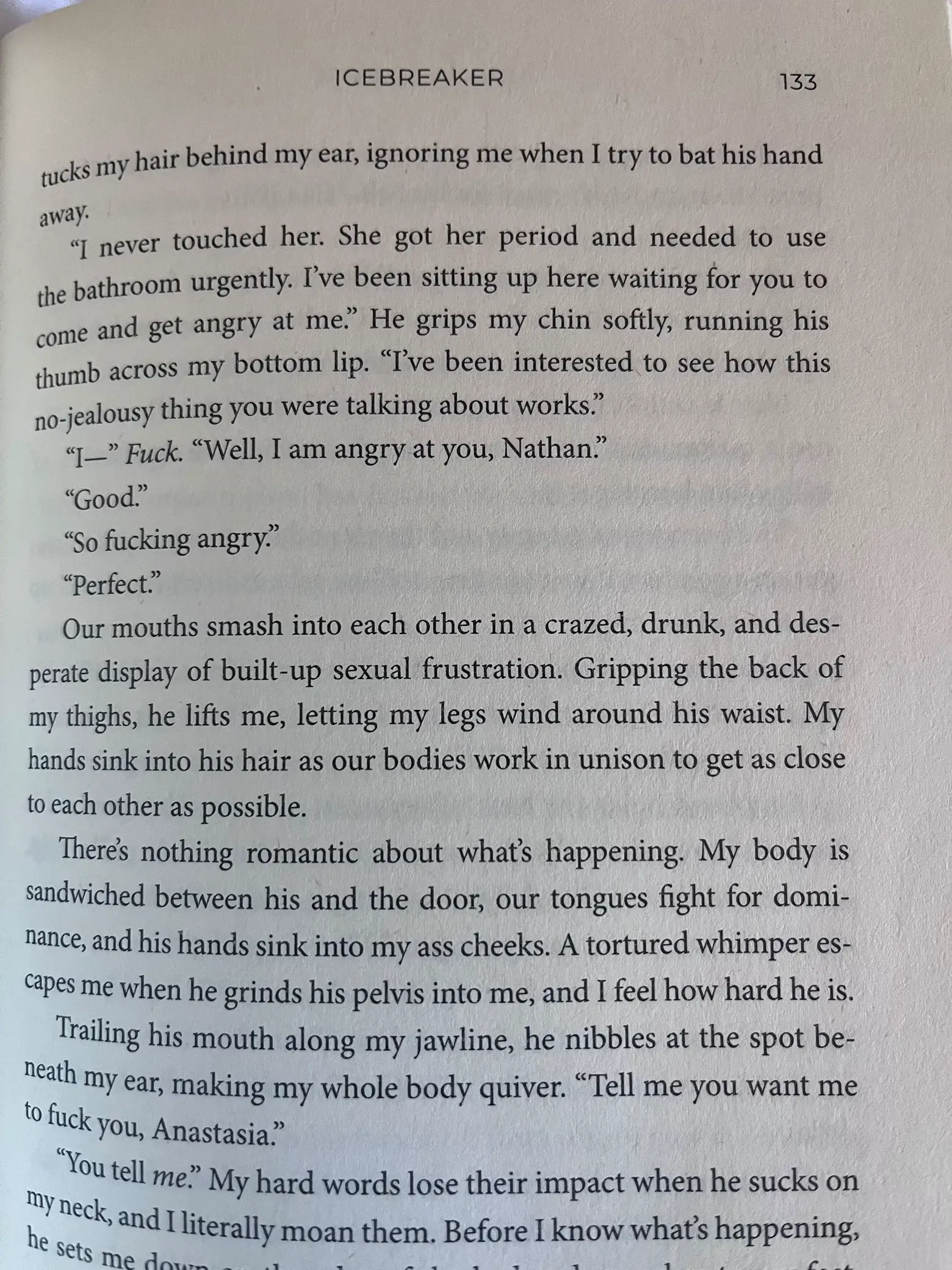Icebreakers Page 136: The Ultimate Guide To Breaking The Ice Like A Pro
You've landed on the right page if you're looking to master icebreakers page 136. Let's dive straight into it, shall we? Imagine this: You walk into a room full of strangers, palms sweaty, heart racing, and your mind goes blank. We've all been there, right? But what if I told you there’s a way to turn that awkward silence into golden opportunities? Enter icebreakers! These magical little conversation starters can work wonders for your social life, career, and even your confidence. So buckle up, because we're about to level up your game.
Now, before we get too deep into the nitty-gritty, let me set the stage for you. Icebreakers aren’t just random questions or comments—they’re carefully crafted tools designed to help people connect. Whether you're at a networking event, a first date, or even a team-building session, these gems can break down barriers and create meaningful interactions. And trust me, when you're armed with the right icebreakers, you'll feel unstoppable.
But why page 136, you ask? Well, buckle up, because this isn’t just any random page number. It’s the secret chapter in the book of life where all the best icebreakers are hidden. Stick around, and I’ll spill the beans on everything you need to know to become an icebreaker extraordinaire. Are you ready to unlock the power of conversation? Let’s go!
- Debra Jo Rupp Films
- What Time Is President Trump S Speech Tonight
- Regal Cinemas Loyalty Program
- Is Blue Cross Blue Shield Not For Profit
- New Orleans Airport Arrivals
What Are Icebreakers and Why Do They Matter?
Alright, let’s get down to business. Icebreakers are those clever little phrases or questions that help ease tension and kickstart conversations. Think of them as the match that lights the fire of connection. Without them, you might just be standing there, twiddling your thumbs, wondering why no one’s talking. But with the right icebreaker, boom! Suddenly, the room is alive with chatter, laughter, and maybe even a little magic.
Here’s the deal: Icebreakers aren’t just for awkward social situations. They’re also super useful in professional settings. Imagine walking into a meeting with a bunch of strangers. Instead of sitting there in silence, you can use an icebreaker to break the ice (pun intended) and get everyone comfortable. It’s like a warm-up for your brain, preparing you for the real conversation ahead.
So, why do they matter? Because they work. Studies show that people who use icebreakers are more likely to form meaningful connections and leave a lasting impression. And let’s face it, in today’s fast-paced world, making a good first impression is everything. So, are you ready to learn the secrets of the trade? Let’s dive in!
- Palownia
- Closed Highways In Louisiana
- Hair Short At Front Long At Back
- Kenny Chesney Concert Tour Schedule
- Montana Bull Rider
Page 136: The Secret Chapter of Icebreakers
Now, let’s talk about page 136. This isn’t just any random page in the book of life. It’s the secret chapter where all the best icebreakers are hidden. Think of it as the treasure map to social success. But before we reveal the secrets, let’s take a quick look at what makes page 136 so special.
Why Page 136?
Page 136 is the ultimate cheat sheet for anyone looking to master the art of icebreaking. It’s not just a random number; it’s a symbol of the countless possibilities that await when you step out of your comfort zone. Here’s why it matters:
- It’s the page where all the best icebreakers are listed.
- It’s the chapter that teaches you how to adapt your approach to different situations.
- It’s the secret weapon that will help you stand out in any crowd.
So, whether you’re at a networking event, a job interview, or even a blind date, page 136 has got your back. Keep reading, and I’ll show you how to make the most of it.
Types of Icebreakers: Which One’s Right for You?
Not all icebreakers are created equal. Just like different situations require different outfits, different conversations require different icebreakers. Here’s a quick rundown of the most popular types:
1. Funny Icebreakers
Let’s face it, laughter is the best icebreaker. A well-timed joke can lighten the mood and put everyone at ease. Here are a few examples:
- “If you were a vegetable, what kind would you be and why?”
- “What’s the most embarrassing thing that’s ever happened to you?”
- “If you could be any animal, what would it be and why?”
These questions might sound silly, but they work wonders for breaking the ice in a fun and lighthearted way.
2. Thought-Provoking Icebreakers
Sometimes, you want to dive a little deeper. Thought-provoking icebreakers are perfect for sparking meaningful conversations. Here are a few examples:
- “If you could live anywhere in the world, where would it be and why?”
- “What’s the best piece of advice you’ve ever received?”
- “If you could change one thing about the world, what would it be?”
These questions encourage people to think critically and share their insights, making for some truly engaging conversations.
3. Personal Icebreakers
Personal icebreakers are all about getting to know someone on a deeper level. They’re perfect for one-on-one conversations or small group settings. Here are a few examples:
- “What’s your favorite childhood memory?”
- “If you could meet anyone in the world, who would it be and why?”
- “What’s the most adventurous thing you’ve ever done?”
These questions help build trust and rapport, making it easier to form lasting connections.
How to Use Icebreakers Effectively
Knowing the right icebreaker is one thing, but using it effectively is another. Here are a few tips to help you master the art of icebreaking:
1. Know Your Audience
Not every icebreaker works for every audience. Before you dive in, take a moment to assess the situation. Are you talking to a group of professionals at a networking event, or a bunch of friends at a party? Tailor your approach accordingly.
2. Be Genuine
People can spot a fake a mile away. If you’re not genuine, your icebreaker won’t work. Be yourself, and let your personality shine through. Authenticity is key to building trust and rapport.
3. Listen Actively
Icebreakers are just the beginning. Once the conversation starts, it’s important to listen actively. Pay attention to what the other person is saying, and respond thoughtfully. This shows that you’re genuinely interested in what they have to say, making it easier to form a connection.
Common Mistakes to Avoid
Even the best icebreakers can backfire if used incorrectly. Here are a few common mistakes to avoid:
1. Being Too Personal Too Soon
While personal icebreakers can be effective, they can also be off-putting if used too soon. Save the deep questions for when you’ve established a rapport with the other person.
2. Overusing Jokes
While humor is a great icebreaker, overusing it can make you come across as immature or unserious. Strike a balance between fun and professionalism.
3. Forgetting to Listen
Icebreakers are just the beginning. If you forget to listen actively, the conversation will fizzle out quickly. Pay attention to what the other person is saying, and respond thoughtfully.
Icebreakers in Action: Real-Life Examples
Let’s take a look at some real-life examples of icebreakers in action:
1. Networking Event
Imagine you’re at a networking event, and you spot someone standing alone. You approach them and say, “Hi, I noticed you standing here by yourself. Are you new to these events, or are you just a people-watcher like me?” Boom! Suddenly, you’ve started a conversation that could lead to a valuable connection.
2. First Date
On a first date, you might use a thought-provoking icebreaker like, “If you could live anywhere in the world, where would it be and why?” This question encourages the other person to open up and share their dreams and aspirations, making for a deeper connection.
3. Team-Building Session
In a team-building session, you might use a personal icebreaker like, “What’s the most adventurous thing you’ve ever done?” This question helps team members get to know each other on a personal level, fostering trust and collaboration.
Conclusion: Level Up Your Icebreaking Game
And there you have it, folks! Icebreakers page 136 is your ultimate guide to breaking the ice like a pro. Whether you’re at a networking event, a first date, or even a team-building session, the right icebreaker can make all the difference. So, what are you waiting for? Go out there and start connecting!
Before you go, I want to leave you with one final thought: The key to mastering icebreakers is practice. The more you use them, the better you’ll get. So, don’t be afraid to step out of your comfort zone and try something new. Who knows? You might just surprise yourself.
And don’t forget to leave a comment below and let me know what your favorite icebreaker is. Or, if you have any questions, feel free to ask. I’d love to hear from you!
Table of Contents
- What Are Icebreakers and Why Do They Matter?
- Page 136: The Secret Chapter of Icebreakers
- Types of Icebreakers: Which One’s Right for You?
- How to Use Icebreakers Effectively
- Common Mistakes to Avoid
- Icebreakers in Action: Real-Life Examples
- Conclusion: Level Up Your Icebreaking Game
- Twin Peaks Characters Now
- Diddy Statue
- New Orleans Airport Arrivals
- Jessica Simpson Divorce
- Nfl Concussion Protocol How Long

Ice Breakers Books

Classroom Icebreakers Español ELE hojas de trabajo pdf & doc

Icebreaker Book 136 Lemon8 Search